“There was no such thing” – is what you get when you ask about the phenomenon that would arouse western curiosity over a decade ago, with the public still anxious to hear from the old soviet block, especially Romania. This phenomenon or its annoying simplification or the market bubble it created – pick whichever you’d like – is, of course, the Cluj school of painting. There certainly are artists such as Dan Perjovski or younger generation artists like Lea Rasovszky, but nothing works better that the myth of a group. Especially the myth of a group of painters. The Ładnie group members know this all too well. They also know there is no bigger burden for them nor for the future generations than such a myth.
Some Polish institutes have blessed us with an elementary knowledge on Romanian contemporary art. CCA Ujazdowskia oragnized a substantial exhibition called A few grams of red, yellow, blue. New Romanian art back in 2014. Even if new art is kind of an exaggeration. The art show brought together works by artists from the 70s and 80s, many of which were already established on the international scene. Works by Adrian Ghenie and Șerban Savu were exhibited alongside Vlad Nancă, Ioana Nemeș, who was already deceased at the time, and Ciprian Mureșan, one of the artists from the generation of international celebrities associated with Cluj’s Paintbrush Factory. An important exhibition by Mureșan took place about a year ago at the Arsenal gallery in Białystok. Later, another one that was just as good was at Dawid Radziszewski gallery, showcasing works by Șerban Savu. That’s kind of it. To find new traces of Romanian art I had to go to Romania.
In Bucharest I met numerous artists who are still very interested in the heritage of post-communist Romania. This is something unimaginable in Poland, but something undeniable in Romania. After all, there was no party secretary in Poland that destroyed an entire area and build an enormous palace there. But the more we distance ourselves from this subject – which happens to be the most talked about and profitable myth of Romanian art – the subject of recent painting become more interesting. Ever since Ghenie & company started conquering the west, roughly at the same time as the “sansalomania” peak in Poland, a lot should have happened in these last few years here, right? So a small visit to Cluj Napoca is very tempting. Especially considering the fact that there are apparent competitions between cities. Some people in Bucharest actually look with yearning towards Cluj, building their own city myths. I’ve heard this more than once: “Yes, you must travel to Cluj, you’ll love it there”. Artist and curator Bogdan claims: “Cluj is tidy and organized. The Bucharest scene is more fractured, chaotic and less professional.”
A gift shop
Cluj turns out to be a rather small and drowsy city. Going a bit out of the railway station, one can see a big part of it. Not that there is too much to be seen from here. Rows of low tenement houses rise on gentle confluence, in the centre St. Michaels’s church spire points towards the sky. Compared to glimmering and overwhelming Bucharest, with its wild mix of urban regularity and architectural excess, Cluj seems to be a surprisingly familiar piece of a calm Mitteleuropa.
The Painting department of the University of Art and Design is housed in a small pavilion in the city’s Central Park. Studios are separated only by some makeshift walls full of paintings. In fact. it’s just a one big studio on a ground floor of the building. A bunch of people say that the University prides in educating a group of international stars. “People from the so called Cluj school hate this university. It was a torture to be here for many of them” – says one curator from Cluj.
But there is one artist associated with the group that stayed in the university longer. And now he’s the most celebrated professor here. His name is Marius Bercea. His show is on view in The Art Museum of Cluj-Napoca when I get there. But you can feel a bit like there just after stepping into the university. It looks like a small copy of the show made by a less able hand. Students’ slavish approach is all too obvious. Bercea himself stands out among his colleagues as a proficient colorist. It’s hard to spot in his paintings the washed out tones used by Savu, Man’s deep grey or Ghenie’s brown impastos. He uses bright smudges of saturated green, yellow and red paints instead. Out of them he creates scenes with modernist villas surrounded by lush vegetation, swimming pools and people in bikinis wandering around them. Sometimes the landscape is Romanian, sometimes it is American, often quite impossible to distinguish. That’s a pretty clever way to sell Romanian ‘exoticism’ in yet another way. Instead of getting deep into communist traumas, Brecea is surfing on the wave of transition. Romania looks like a slightly post-apocalyptic California in his pieces. Students in Cluj take a fancy for his small scale floral still lives the most. I encounter this kind of derivative pieces both in the university’s gallery Casa Matei, at the opening of a show presenting works by two students selected in a competition, and at the group show in a gallery Launloc, located in a picturesque villa on a hill.
In a world full of male stars of an international art market, women are downgraded. There was no female professor in the Painting Department for decades in Cluj. It changed back in 2004, when Ioana Olăhuț started to teach here. Her approach to painting is not that different from her more famous colleagues. She uses sweeping brushstrokes and spills mannerist stains of paint on her canvases. What is a bit different compared to the others is a ‘girlish’ element in her work: pouring pink colour, motifs such as Judith beheading Holofernes or a menstruating girl. What is already hackneyed elsewhere, here in Romania is still rarely visible through a solid wall of dominant manner. Olăhuț surpasses the scheme sometimes. In one work being a part of a series entitled A chicken’s nightmare, two giant strawberries smash the chicken. Another attempt to ‘feminize’ Romanian painting is an output of Suzana Dan, full of surreal landscapes and obnoxious colour arrangements. Her run-of-the-mill kind of playful kitsch is nevertheless more kitschy than playful.
Anca Bodea is another female teacher at the painting department, who had been fairly recently appointed. Her studio belongs to a rather small group of studios located outside of both Fabrica de Pensule and Tehnofrig, a former fridge factory building where some artists and gallerists moved when the rent in Fabrica de Pensule was abruptly increased. Bodea can rent a studio like this thanks to her husband’s family and the Artists’ Union membership (an organization slightly less conservative than its Polish equivalent). Her studio is surrounded by others, owned by the union’s oldtimers. Bodea’s output happens to be rather escapist, intimate, and also kind of academic compared to her colleagues. In one series, she painted beds in which she slept with her husband in various places, mostly in Italy during vacations. She also didn’t escape the local flower fixation. Her recent paintings depict some exotic gardens flooded with blue moonlight, sometimes including some wild animals as well. “It all started with that chair you’re sitting on right now”, Anca says. In a pile of canvases she finds the right one, with an image of the armchair covered still with the same satin textile in a glittering blue colour. She examines the painting carefully, looking for the changes in a dried paint. “See, here the folds are almost flat now. And here some delicate shades disappeared as well.” After gazing at more and more of her paintings, her rather enthusiastic attitude towards the university comes with no surprise. Bodea admits that it is probably a bit more petrified than the National University of Arts in Bucharest (which is also far from being super progressive), but she appreciates the solid technical education it provides.
Zoltán Béla, a painter of Hungarian roots, educated in Cluj, currently based in Bucharest, says: “Maybe it’s because Cluj is small that the people there are more influenced by the local artists. The art market plays a role in that too. Galleries are not fond of changes, I know something about it”.
An obligatory visit in Fabrica de Pensule feels like visiting a gift shop. When the rent was increased, many artists left the place. A handful of them stayed, keeping up the appearances and trying to pretend that nothing happened. But the place looks almost deserted, even though it’s fully prepared for occasional visits, almost like a professional amusement park, when some tourist come here lured by the legend. There is an enthusiastic guide waiting for the visitors, one can also buy some branded bags, t-shirts, and postcards. Lateral gallery prepared an anniversary show (Being Mountains, Being Seas) with a large group of artist that worked with the gallery. Ostensibly, it’s an exhibition on time. The newest gallery here, called Pilot, is having a show by Cristina Gagiu, dedicated to her daughter Alma. Gagiu invited some other artists to participate, including Mureșan. That’s because Alma is kind of a Fabrica de Pensule’s child too, being coeval with it and raised by its community.
Fabrica de Pansule is about to be partly transformed into some ‘art and business centre’, which will be the last straw that’ll break the camel’s back. If this place is on the verge of extinction now, Tehnofrig is just about to be born. For now it’s full of enthusiasm, even if its name sounds like some cool Berlin techno club. A bunch of artists already work here, but the tour is still a bit virtual. The artist who’s showing me around starts many of his sentences with “Here there is going to be…”
The legend of Cluj even brought here some curators from Italy, who opened a gallery called IAGA. Although they represent a handful of local artists, it seems that reality doesn’t live up to their expectations. When I get to Cluj, there is a show of elderly actionist Hermann Nitsch on view. A hypercommercial gallery space, not even a white cube, more like a corporate lobby, sets a quirky background for the old-time provocateur, highlighting classicization of his art. A collector can sit comfortably on a black leather couch and decide which of the pieces smeared with blood will fit his living room the best… Heading back to Bucharest, I remember the words of Liviu, young artist and gallerist from Cluj that is focused on showing works by his generation: “We don’t have any special preferences regarding subjects or media, we show basically every kind of art possible. Well… maybe except painting. I just didn’t find anything interesting in that yet.”
Are you kidding?
Although Romanian art of the mid and younger generation is known for approaching communist past and post-communist reality with wry humour, painting is an exception to this rule. As if it tried to prove its own relevance (Romania had to get through the ‘death of painting’ phase as all of the world did), Romanian painting emerged as something heavy, grueling and serious. It had to sink in painterly ‘mud’ up to its eyeballs. It turned out that traditional painting infused with some gentle western influence can go side by side with a projection of an exotic country filled with depressing aura out of Herta Müller’s books. And it was perfect for export.
After the fall of Ceaușescu’s regime, Romanian art takes a breath and dives deep into the global artworld after decades of very humble presence there. This process of ‘rediscovering’ still continues to this day. Geta Brătescu’s show in the Romanian Pavilion at this year’s Venice Biennale not only shows that, but it allows one to have a closer look at the process of structuring the past back in Romania. Classics like Ion Grigorescu, and Brătescu herself, are becoming precious loot for galleries both abroad and in Romania, and chapters as important as Romanian conceptual art are just being researched by young art historians. A couple of years ago, Peter Weibel also visited Romania, looking for some ‘forgotten old masters’ desperately.
But Romanian art’s golden boy went out into the world successfully. Adrian Ghenie was ideal star material from the ‘former East’. Not only born in a country that went through a harsh dictatorship, but also raised in a small city. Making reference to both the traumatic history of his country and to classical painting, a guy squeezing himself into a golden frame, finding his place in the canon and highlighting historical continuity. His work isn’t too subtle. It’s ostentatiously showing off its virtuosity and impetus. It can please some regular viewers, and some collectors, who can rest assured looking at its technical complexity that that load of money was well spent. No wonder that conservative professors accepted the penchant for this kind of aesthetics among their students. After all, it’s still a rather academic painting that can be rooted in both favourite academic values – study of nature and autonomy of gesture. Let’s add some works as a series of Self Portraits as Vincent van Gogh and there will be something for broad audience, and for students falling into local legend and believing in a XIX-century myth of tortured genius, and for professors that appreciate good craftsmanship. Ghenie’s show in the previous edition of Venice Biennale turned out to be a bittersweet thing for Romanians. It strengthened his international position, but on the other hand the show was said to be a safe proposition with peculiarly commercial smell. Some people felt that it was a missed opportunity to show Romania from some different side. Especially since it was the edition dedicated to the artworld’s decentralization, curated by Nigerian-born star curator Okwui Enwezor. And Romania did what everybody expected it to do. It put some traditional dress on and made sure that everybody can see the price tags.
The most interesting visit for me is in Răzvan Boar’s studio. Boar, artist from a generation born in the early 80s, made some fuss a couple of years ago when Nicodim gallery started to represent him and then he took a sudden turn in his style. Back then, he used to paint as you might expect him to do, even though he was trained in Bucharest. He was using a lot of grey impasto, referring to history and painting distorted portraits. And then he broke the first commandment of a Roamnian painter. He stopped being so serious about it. He cleaned his palette, started to play around with different kind of paints, layers of translucent papers, but above all, he ditched realist figures for cartoonish characters. Using the aesthetic that didn’t really resemble anything else in Romania, Răzvan started to paint eroticized nudes and animals, a kind of a contemporary fête galante. Both conventional and ‘unserious’. Romanian audience didn’t really like that.
We can find some traces of contemporary painters like Sanya Kantarovsky influencing Boar. One can also try to find some historical connections within Romanian art. Like with Florin Mitroi, a painter that died in 2002, whose portraits of people with worn out, grey faces, outlined with hard black line, bear some obvious resemblance to Bernard Buffet’s art. But their mood, with all the knives cutting the air and splashes of bright red colour, is far different from Boar’s. Răzvan likes to disrupt consistent groups of work by suddenly putting some ‘old-style’ piece in between them, just to see what it’ll change. Now there is a classical nude portrait of his girlfriend, artist Ioana Stanca, in Răzvan’s studio, just beside some funny cartoonish stuff.
And what about the younger generation? For now, it’s barely visible. Painters born in the late ’80s and ’90s are still either wrestling in Cluj’s mud or catching up with some other established aesthetics. They didn’t manage to create a distinctive and alluring narrative for themselves yet. Răzvan says: “Young painters feel a lot of pressure, especially in Cluj. They go to university, they face this legend, and they want to be a part of it. And they start to treat all of it really seriously. It’s like a religion. They say that only their god is true. But it’s obviously not.”
Piotr Policht’s residency in Bucharest and Cluj was made possible thanks to the generous support of AFCN and the Polish Institute in Bucharest.
POSTED BY
Piotr Policht
Piotr Policht (b. 1992), art critic, contributing editor at SZUM magazine. Author of numerous papers, reviews and interviews published in magazines such as Obieg, Opcje, Magazyn Sztuki, Polisemia and ...
magazynszum.pl/

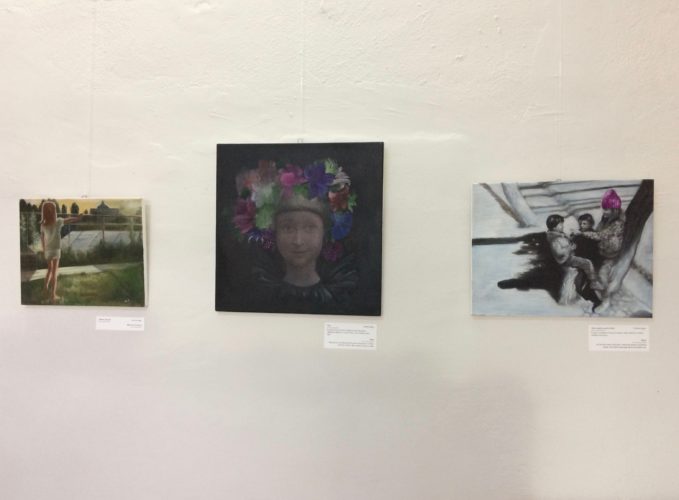
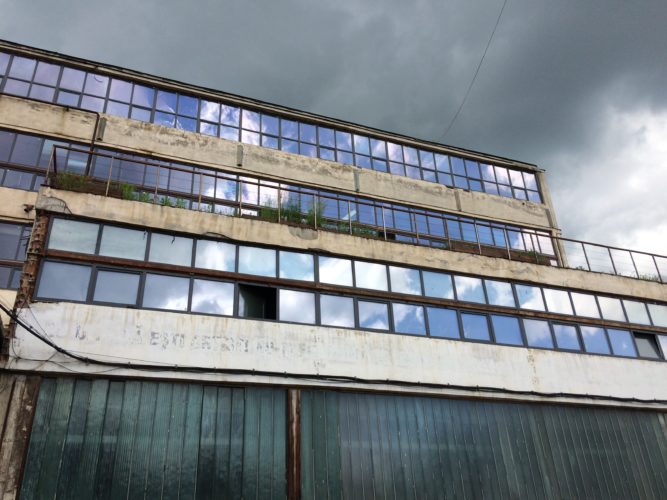
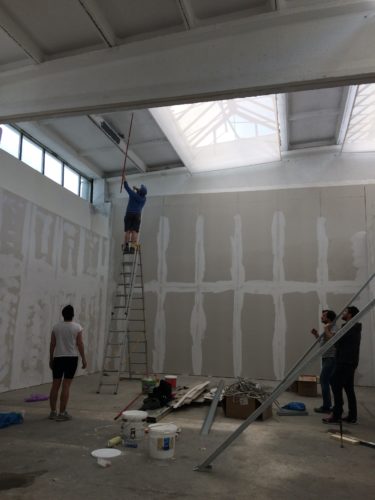
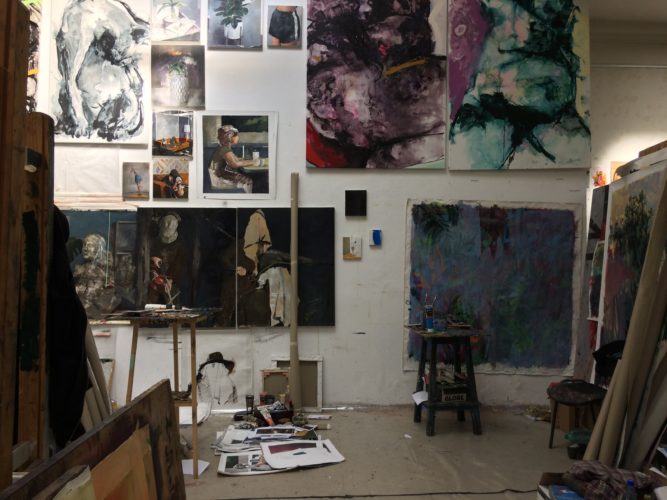
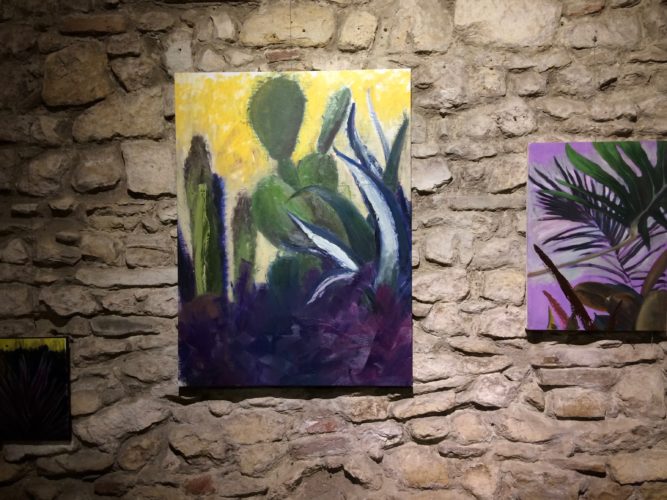
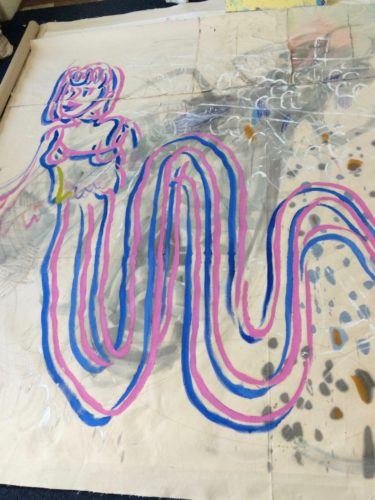
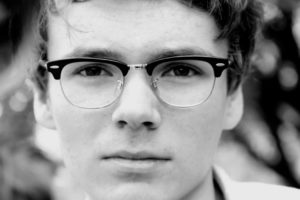
2 Comments
Ce porcarie de articol :)))
Vrei să ne și spui de ce sau pur și simplu trollezi?